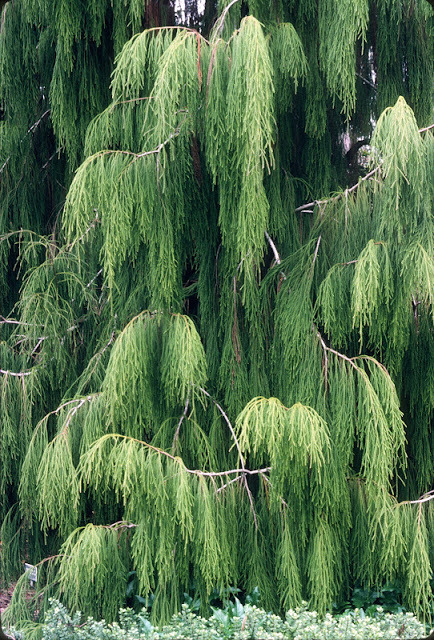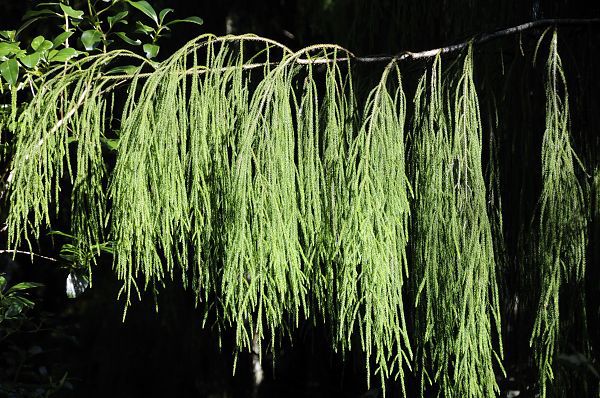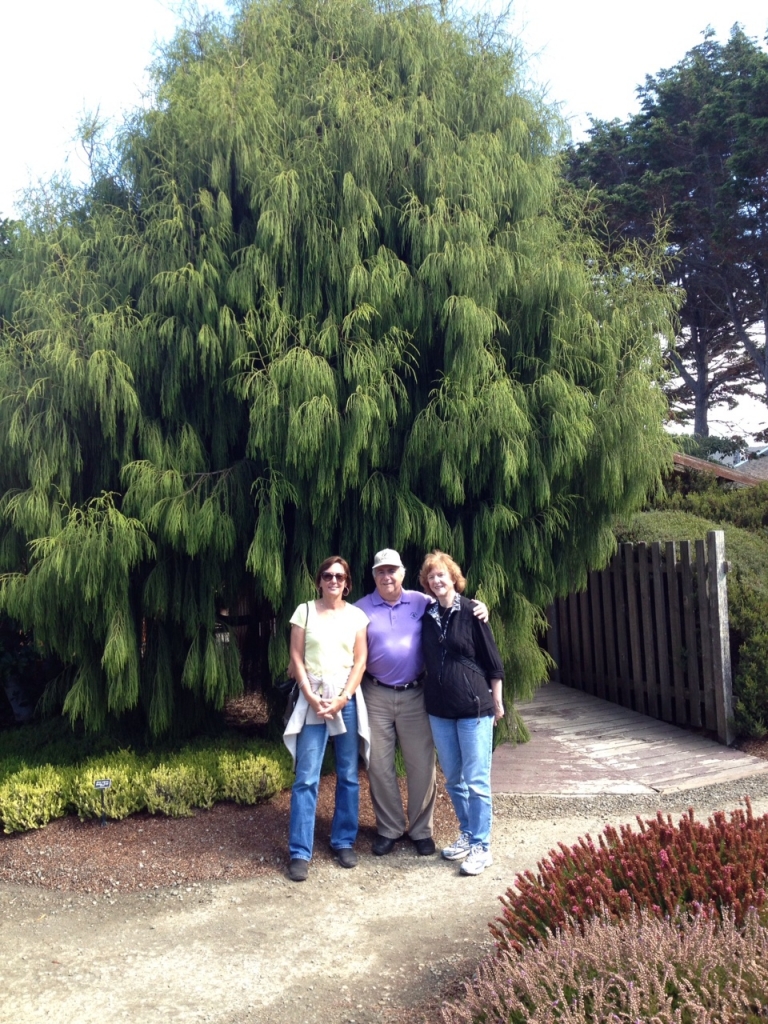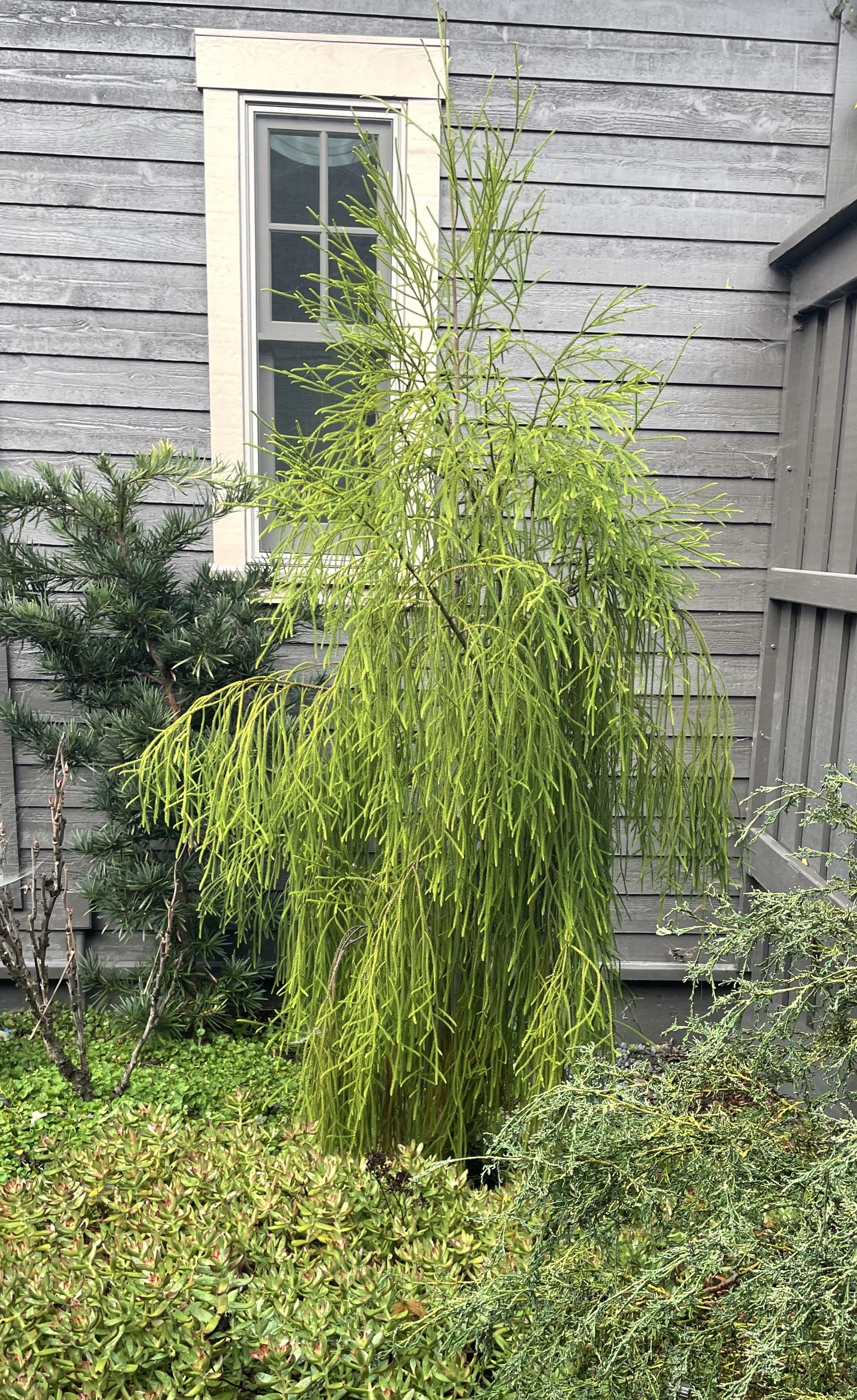Dacrydium cupressinum, as described in 1786 by Solander exJohann Georg Adam Forster, in Florulae Insularum Australium Prodromus, is commonly known as Rimu or historically, red pine.
Description. Rimu is a slow-growing evergreen coniferous tree in the Podocarpaceae family, eventually attaining a height of up to 150 feet (50 m) tall, although most surviving large trees are 60 to 100 feet (20 - 35 m) tall. This conifer is dioecious, with male and female cones found on separate trees.
Distribution. This species Rimu is native throughout New Zealand, on the North Island, South Island and Stewart Island/Rakiura. Although the largest concentration of trees is now found on the west coast of the South Island, the biggest trees tend to be in mixed podocarp forest near Taupo (the Pureora, Waihaha, and Whirinaki Forests).
Of all the New Zealand conifers, this is probably the one you are most likely to find growing as an ornamental tree outside of New Zealand.



